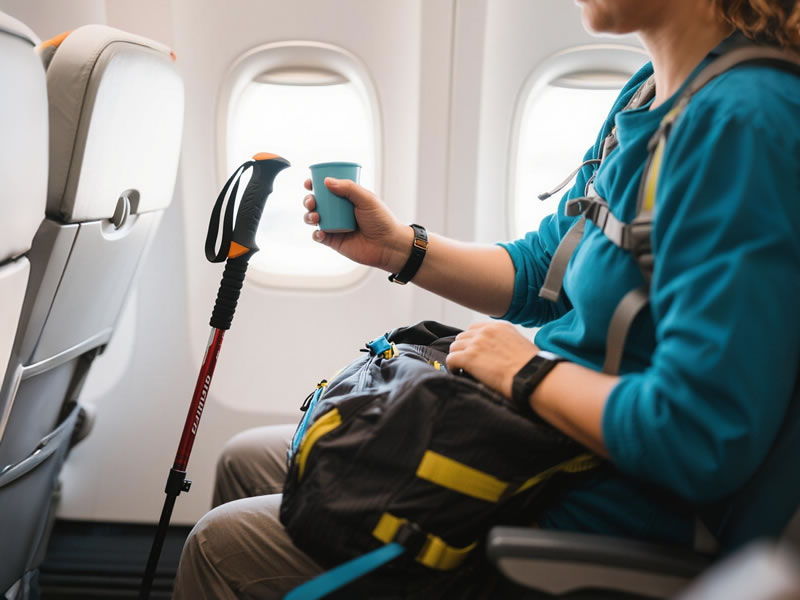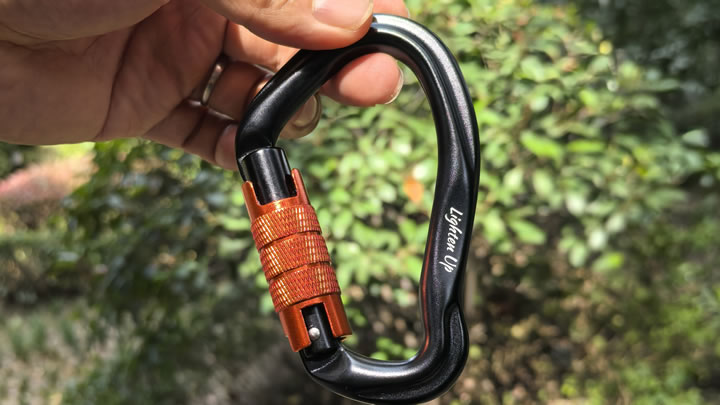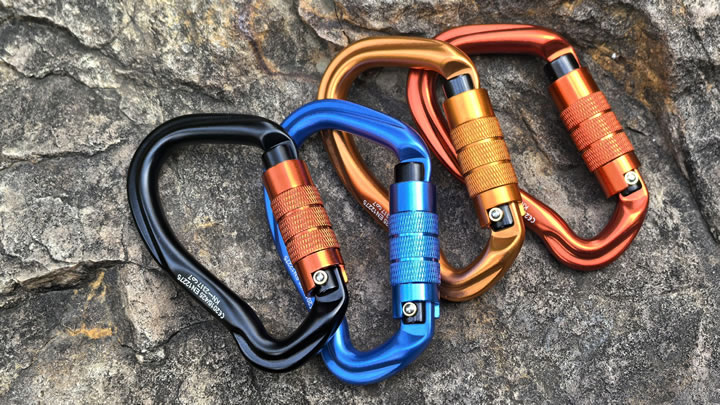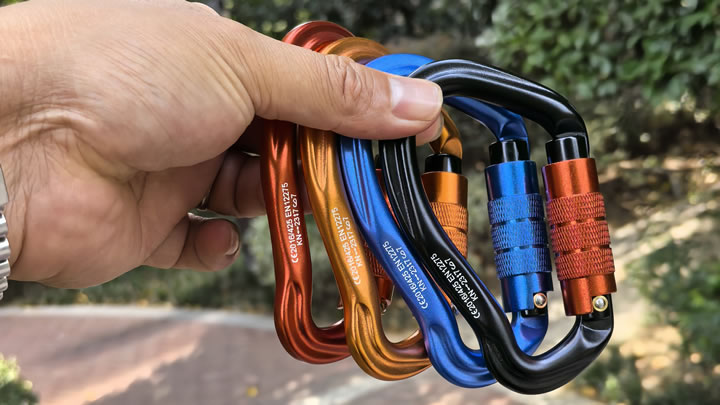Are hiking poles allowed on airplanes?
Navigating airline security with hiking gear can be confusing, especially when it comes to trekking poles. The straightforward answer is that most airlines prohibit hiking poles in carry-on luggage but permit them in checked baggage. However, the details matter significantly, and understanding the specific regulations can save you from unexpected delays, additional fees, or worse—having to surrender your expensive poles at security.

The Fundamental Rule: Why Carry-On is Problematic
The primary reason hiking poles are restricted in cabin luggage comes down to security protocols. The Transportation Security Administration (TSA) and equivalent international agencies classify trekking poles as "potential weapons" due to their pointed tips and rigid construction. This places them in the same category as other sporting goods that could theoretically be used as clubs or spears.
TSA Guidelines State:
"Hiking poles are prohibited in carry-on bags. They must be packed in checked luggage."
This rule applies regardless of whether you have telescopic poles that collapse to a compact size or foldable Z-poles. The material—aluminum, carbon fiber, or composite—also doesn't change this fundamental restriction.
Checked Baggage: The Safe Choice
When packing hiking poles in checked luggage, follow these best practices to prevent damage and facilitate smooth security screening:
Proper Packing Technique:
- Collapse poles completely to their shortest length
- Secure locking mechanisms to prevent accidental extension
- Wrap tips with protective caps or tape to prevent damage to other luggage
- Place poles along the side of your suitcase or backpack, preferably in a protective case
- Consider a dedicated pole case if traveling with expensive models
Airline-Specific Variations:
While most major airlines follow TSA guidelines, some have additional restrictions:
- Weight limits: Some budget airlines have strict weight limits for checked baggage
- Oversize fees: Poles rarely trigger oversize fees unless exceptionally long
- Special declarations: Typically not required for standard trekking poles
The Exception: Mobility Assistance
The significant exception to the no-carry-on rule involves legitimate medical need. If you require hiking poles for mobility assistance, they may be permitted in the cabin. However, this isn't automatically granted—you'll need to:
- Notify the airline in advance about your mobility needs
- Be prepared to explain why you need the poles for airport navigation
- Understand that final determination always rests with security personnel
Poles used strictly for hiking rather than mobility assistance don't qualify for this exception. The distinction lies in whether you need them to navigate the airport itself.
International Travel Considerations
Regulations vary significantly by country, creating potential complications for international hiking trips:
European Union:
Generally follows similar protocols to the U.S., but some European airlines are stricter about sporting equipment in checked luggage.
Australia and New Zealand:
Typically permit poles in checked baggage but may require special declaration of sporting equipment.
Asian Countries:
Regulations can vary dramatically—research specific destination countries well in advance.
Pro Tip: When traveling internationally with hiking poles, always check with both your departing airline and any connecting carriers, as you'll need to comply with the strictest regulations along your entire route.
Practical Scenarios and Solutions
The Through-Hiker's Dilemma:
Many long-distance hikers travel with minimal gear and prefer to avoid checked baggage. Unfortunately, there's no perfect solution—you must either check your poles or make alternative arrangements upon arrival.
Rental Alternatives:
For destinations with popular hiking areas, consider:
- Renting poles at your destination
- Purchasing inexpensive poles locally and donating them before departure
- Shipping poles ahead to your first trailhead accommodation
Multi-Sport Travel:
If you're traveling with other sporting equipment:
- Consolidate all gear in one checked bag to avoid multiple fees
- Use specialized sporting equipment luggage designed to protect multiple items
- Consider insurance for expensive equipment when checking it
Expert Tips for Hass-Free Travel
- Research Before Booking:Check airline policies before purchasing tickets, as budget carriers often have the strictest rules and highest fees for sporting equipment.
- Print Relevant Policies:Have a copy of the airline's sporting equipment policy readily available during check-in and security screening.
- Arrive Early:Allow extra time for potential baggage inspection when checking hiking poles.
- Remove Accessories:Detach compasses, lights, or other accessories that might raise additional security concerns.
- Consider Pole Design:While all poles must be checked, collapsible models pack more easily and are less likely to be damaged in transit.
What About Tent Poles?
Many hikers wonder about tent poles, which often accompany trekking poles. The good news is that tent poles are generally permitted in carry-on luggage as they lack the pointed tips and club-like potential of trekking poles. However, security personnel have final discretion, so packing them in checked luggage remains the safest option.
The Bottom Line: A Simple Checklist
To ensure your hiking poles travel successfully:
- Always pack poles in checked baggage
- Collapse and secure them completely
- Protect sharp tips with caps or tape
- Research airline-specific policies in advance
- Arrive early for potential additional screening
- Consider alternatives if avoiding checked bags
When Things Go Wrong
Despite careful planning, you might encounter security personnel unfamiliar with the specific regulations. If this happens:
- Remain calm and polite
- Reference the printed airline policy
- Ask to speak with a supervisor if necessary
- Be prepared to check the poles at the gate if given the option
The relatively low cost of checking a bag pales in comparison to replacing quality hiking poles confiscated at security.
Looking Forward: Will Policies Change?
As hiking and trekking continue growing in popularity, some industry experts speculate that airlines might eventually develop more nuanced policies for sporting equipment. However, given current security concerns, most agree that the fundamental prohibition on carry-on trekking poles will remain for the foreseeable future.
Conclusion
While the prohibition on carrying hiking poles onto planes may inconvenience some travelers, understanding and preparing for these regulations ensures a smooth start to your outdoor adventures. By always packing poles in checked luggage, properly securing them, and researching airline-specific policies, you can focus on anticipating the trails ahead rather than worrying about airport logistics.
Remember that these regulations exist for everyone's safety, and a few minutes of preparation can prevent travel day disappointments. Your poles will be waiting safely in your checked luggage, ready to support your journey once you reach the trailhead.






